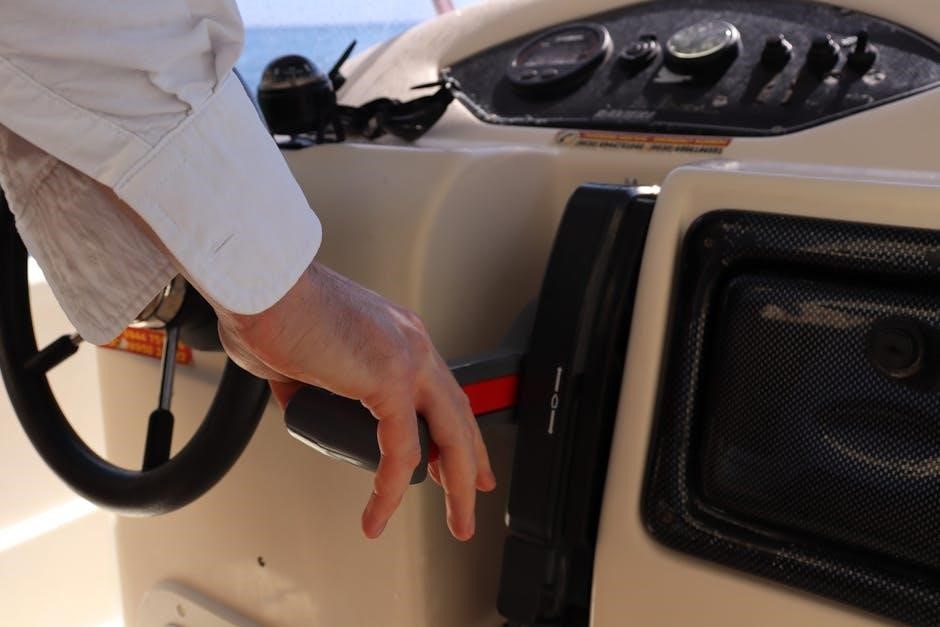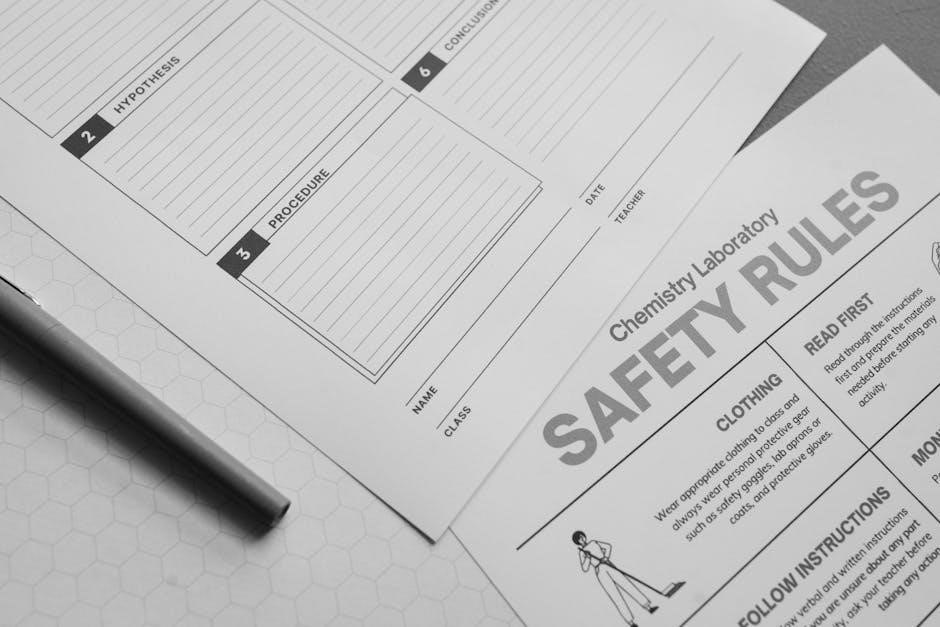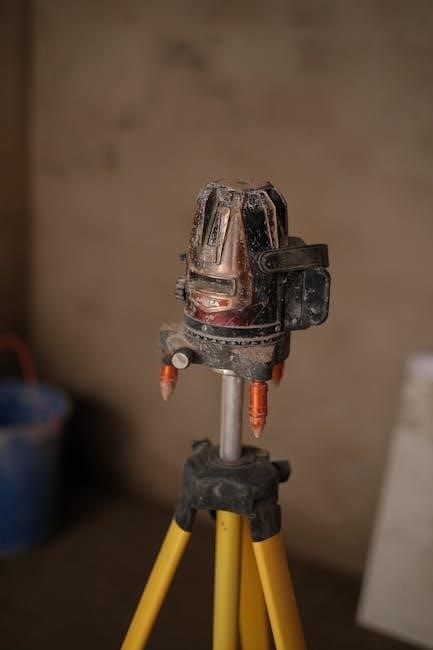The Protoevangelium of James is an apocryphal gospel narrating the life of Mary and the infancy of Jesus‚ offering unique insights into early Christian traditions.
1.1 Overview of the Protoevangelium of James
The Protoevangelium of James‚ an apocryphal text‚ provides a narrative about the life of Mary‚ the mother of Jesus‚ and the infancy of Christ. It is dated to the 2nd century and offers a detailed account of Mary’s upbringing‚ marriage to Joseph‚ and the miraculous birth of Jesus. The text emphasizes Mary’s purity and divine role‚ shaping early Christian beliefs about her perpetual virginity. Despite its lack of historical verification‚ it has significantly influenced Christian theology and art. The Protoevangelium of James is widely available in PDF formats‚ making it accessible for scholarly and personal study. Its themes and motifs continue to be explored in modern research and religious discussions.
1.2 Historical Background and Significance
The Protoevangelium of James‚ also known as the Gospel of James‚ is a 2nd-century apocryphal text that provides a narrative about the life of Mary‚ the mother of Jesus‚ and the infancy of Christ. It is considered one of the earliest and most influential infancy gospels‚ aiming to fill the gaps in the biblical account of Mary’s life and the events surrounding Jesus’ birth. The text emphasizes Mary’s purity‚ divine election‚ and perpetual virginity‚ themes that became central to early Christian theology. Despite its apocryphal status‚ the Protoevangelium of James has had a profound impact on Christian tradition‚ inspiring art‚ literature‚ and devotion. Its availability in PDF format has made it accessible for modern scholars and enthusiasts alike‚ ensuring its continued relevance in religious and historical studies.

The Content and Structure of the Protoevangelium of James
The Protoevangelium of James details the life of Mary‚ her divine conception‚ and Jesus’ infancy‚ structured as a narrative rich in theological symbolism and apocryphal traditions.
2.1 The Infancy Narrative in the Protoevangelium of James
The Protoevangelium of James provides a detailed infancy narrative‚ focusing on Mary’s life‚ her divine conception‚ and the events surrounding Jesus’ birth. It describes Mary’s upbringing in the Temple‚ her miraculous conception by Anna‚ and the circumstances of her betrothal to Joseph. The text includes vivid descriptions of the Nativity‚ the visit of the Magi‚ and the massacre of the innocents by Herod. This narrative is rich in theological themes‚ emphasizing Mary’s purity‚ divine providence‚ and the fulfillment of Old Testament prophecies. The story also includes apocryphal elements‚ such as the speaking newborn Jesus and the escape to Egypt‚ which are not found in the canonical Gospels. This infancy narrative has significantly influenced early Christian art‚ literature‚ and devotion‚ shaping popular imagery of the Nativity and the Holy Family.
2.2 Key Themes and Motifs in the Text
The Protoevangelium of James explores several key themes‚ including divine providence‚ Mary’s purity‚ and the miraculous nature of Jesus’ conception and birth. A central motif is the fulfillment of Old Testament prophecies‚ linking Mary and Jesus to Israel’s sacred history. The text emphasizes the importance of faith and obedience‚ particularly through Mary’s unwavering trust in God. Another prominent theme is the contrast between the sacred and the profane‚ with Mary’s perpetual virginity serving as a symbol of divine favor. The narrative also highlights the role of the Holy Spirit in guiding events and the supernatural interventions that validate Jesus’ divine mission. These themes and motifs collectively present a theological framework that elevates Mary’s role and underscores the miraculous origins of Christianity.
2.3 The Role of Mary in the Protoevangelium of James
Mary holds a central and reverential role in the Protoevangelium of James‚ depicted as a holy and dedicated figure from her earliest days. The text emphasizes her purity‚ obedience‚ and divine election‚ portraying her as a vessel of God’s plan. Her perpetual virginity is a key aspect‚ reinforcing her sacred role in the miraculous conception and birth of Jesus. The narrative highlights her unwavering faith and her acceptance of divine will‚ establishing her as a model of piety. Mary’s character serves to underscore the theological significance of Jesus’ origins‚ linking her to the broader salvific narrative. Her role in the text not only elevates her status but also reinforces the miraculous nature of Christ’s birth‚ central to Christian doctrine.
The Theological and Doctrinal Implications
The Protoevangelium of James significantly influenced early Christian theology‚ particularly in Mariology and Christology‚ shaping doctrines like the virgin birth and Mary’s perpetual virginity‚ and bridging textual and doctrinal developments in the early church.
3.1 The Protoevangelium of James and the Virgin Birth
The Protoevangelium of James plays a pivotal role in establishing the doctrine of the Virgin Birth‚ describing Mary’s miraculous conception of Jesus without human intervention. This text emphasizes Mary’s purity and divine election‚ reinforcing the theological foundation for the virgin birth narrative. By detailing the miraculous events surrounding Mary’s life‚ including her upbringing in the Temple and her role as a vessel for the Messiah‚ the Protoevangelium of James provides a scriptural basis for the belief in Jesus’ divine origin. Its portrayal of Mary as a perpetual virgin further solidified this doctrine in early Christian thought‚ influencing later theological developments and liturgical practices.

3.2 The Concept of Mary’s Perpetual Virginity
The Protoevangelium of James vigorously upholds the concept of Mary’s perpetual virginity‚ portraying her as a sacred figure whose purity remains intact throughout her life. The text describes Mary as a temple virgin‚ emphasizing her divine consecration from childhood. Her marriage to Joseph‚ an elderly widower with children‚ is depicted as a divine arrangement to protect her virginity. The narrative reinforces the idea that Mary’s virginity was not merely physical but also spiritual‚ symbolizing her role as a vessel of God’s plan. This concept became central to early Christian theology‚ shaping doctrines about Mary’s sacred role and influencing devotion to her as a pristine‚ unchanging symbol of divine grace and purity.
3.3 The Influence on Early Christian Theology
The Protoevangelium of James significantly shaped early Christian theology‚ particularly in its portrayal of Mary’s divine role and the miracle of the Virgin Birth. It reinforced the belief in Mary’s perpetual virginity‚ which became a cornerstone of Marian doctrine. The text also influenced early Christian liturgy and devotional practices‚ offering a narrative that emphasized Mary’s sacred purity and her central role in the Incarnation. Additionally‚ it contributed to theological debates about the nature of Christ and the significance of the Virgin Birth. The Protoevangelium of James is thus a foundational text that bridged New Testament accounts with later theological developments‚ shaping the veneration of Mary and informing early Christian understandings of salvation history.

Manuscript Tradition and Textual History
The Protoevangelium of James is preserved in numerous manuscripts‚ with the earliest dating to the 2nd century. These texts exist in Greek‚ Latin‚ and other languages‚ showing its wide dissemination. Scribes played a crucial role in copying and sometimes altering the text‚ leading to variations across different manuscript families. This textual diversity highlights the dynamic nature of early Christian literature transmission.
4.1 The Earliest Manuscripts of the Protoevangelium of James
The Protoevangelium of James is an apocryphal text‚ and its earliest manuscripts date back to the 2nd century CE. The most ancient manuscript is a Greek fragment‚ which provides critical insights into the text’s origins. These early manuscripts are invaluable for understanding the textual history and transmission of the Protoevangelium of James. The Greek manuscripts are particularly significant‚ as they are closer to the original composition. Over time‚ the text was translated into various languages‚ reflecting its widespread influence in early Christian communities. The earliest manuscripts also reveal the textual variations that emerged as the document was copied and disseminated across the Mediterranean world.
4.2 Textual Variations and Manuscript Families
The Protoevangelium of James exhibits textual variations across its manuscripts‚ reflecting the dynamic nature of its transmission. These variations often stem from scribal errors‚ intentional edits‚ or regional adaptations. Scholars identify distinct manuscript families‚ such as the “short” and “long” recensions‚ which differ in content and structure. The “short” recension omits certain narratives‚ while the “long” recension includes additional details. These differences provide insights into how the text was interpreted and adapted by early Christian communities. By analyzing these variations‚ researchers can reconstruct the textual history and identify the most plausible readings. Textual variations also highlight the fluidity of early Christian literature and its evolution over time.
4.3 The Role of Scribes in Shaping the Text
Scribes played a crucial role in shaping the Protoevangelium of James‚ as they were not merely copyists but also interpreters and editors. Their interventions ranged from correcting errors to intentionally altering content for theological or stylistic reasons. Some scribes added details to enhance narratives‚ while others omitted or modified sections to align the text with emerging doctrinal priorities. For instance‚ descriptions of Mary’s purity and miraculous events were often amplified to emphasize her sanctity. These editorial choices reflect the scribes’ theological perspectives and cultural contexts‚ making them active participants in the text’s evolution. Their work balances preservation and innovation‚ influencing how the Protoevangelium of James has been understood across centuries.
The Protoevangelium of James in Early Christian Literature
The Protoevangelium of James significantly influenced early Christian literature‚ shaping narratives about Mary and Jesus. It inspired apocryphal works and informed theological discussions‚ becoming a foundational text.
5.1 The Protoevangelium of James and the New Testament
The Protoevangelium of James and the New Testament share a common focus on the life of Jesus Christ and the significance of Mary‚ his mother. While the New Testament gospels—Matthew‚ Mark‚ Luke‚ and John—detail the life‚ teachings‚ death‚ and resurrection of Jesus‚ the Protoevangelium of James provides additional narratives about Mary’s early life‚ her parents‚ and her marriage to Joseph‚ which are not mentioned in the canonical texts. This text emphasizes Mary’s perpetual virginity‚ a doctrine that‚ while not explicitly stated in the New Testament‚ is supported by certain passages‚ thus influencing early Christian theological beliefs about Mary’s role in salvation history.
5.2 The Protoevangelium of James and Other Apocryphal Gospels
The Protoevangelium of James shares thematic and narrative similarities with other apocryphal gospels‚ such as the Gospel of Thomas and the Gospel of Peter‚ which also explore aspects of Jesus’ life not detailed in the New Testament. However‚ the Protoevangelium of James is unique in its focus on Mary’s life and her role as the mother of Jesus. While other apocryphal gospels often emphasize Jesus’ teachings or resurrection‚ James centers on Mary’s purity and divine election. This text also interacts with broader apocryphal traditions‚ such as the infancy narratives found in the Gospel of Matthew and the Gospel of Luke‚ but expands these stories with additional details about Mary’s childhood and marriage to Joseph. Together‚ these texts enrich early Christian storytelling about the holy family.
5.3 The Protoevangelium of James in Early Church Fathers
The Protoevangelium of James is occasionally referenced or alluded to by early Church Fathers‚ though its canonical status was debated. Origen and Eusebius‚ for instance‚ acknowledged the text but questioned its authority‚ distinguishing it from the New Testament. Meanwhile‚ figures like John of Damascus drew on its imagery‚ particularly regarding Mary’s perpetual virginity. The text’s influence is evident in early Christian thought‚ even as its apocryphal nature led to caution. Despite this‚ it contributed to key theological developments‚ such as the doctrine of Mary’s virginity‚ which became central to orthodox belief. Its presence in early Christian literature underscores its role in shaping Marian theology‚ even as its scriptural status remained contested.
The Protoevangelium of James in Art and Culture

The Protoevangelium of James has profoundly influenced medieval art‚ inspiring iconic scenes like the Annunciation and Nativity. Its vivid narratives continue to inspire cultural and artistic expressions globally.
6.1 The Protoevangelium of James in Medieval Art
The Protoevangelium of James significantly influenced medieval art‚ particularly in depictions of the Virgin Mary and the infancy of Jesus. The text’s vivid narratives‚ such as the Annunciation and the Nativity‚ became central themes in illuminated manuscripts and church frescoes. Artists often drew inspiration from its detailed descriptions of Mary’s purity and divine motherhood. Scenes like the Virgin spinning the purple veil for the Temple and the miraculous birth of Jesus were frequently portrayed. These artistic interpretations not only reflected the text’s theological importance but also reinforced its cultural and religious significance during the medieval period. The Protoevangelium’s imagery continues to be a cornerstone of Christian iconography.
6.2 The Protoevangelium of James in Literature and Drama
The Protoevangelium of James has profoundly influenced literature and drama‚ particularly in works focusing on the life of the Virgin Mary. Its narratives‚ such as the miraculous birth of Mary and her divine role‚ have inspired numerous literary adaptations. Medieval mystery plays often dramatized its stories‚ emphasizing Mary’s purity and her significance in salvation history. The text’s vivid descriptions of Mary’s childhood and her role as the mother of Jesus have also been adapted into poetic and dramatic works. By providing a detailed account of Mary’s life beyond the New Testament‚ the Protoevangelium has enriched literary and dramatic interpretations‚ making it a foundational source for exploring her character and spiritual significance in Christian tradition. Its themes continue to inspire modern adaptations‚ blending theology with storytelling.
6.3 The Protoevangelium of James in Modern Media
The Protoevangelium of James has found new life in modern media‚ where its narratives are reinterpreted for contemporary audiences. Films‚ documentaries‚ and TV series often draw inspiration from its accounts of Mary’s early life and the miraculous events surrounding Jesus’ birth. Digital platforms and social media have also amplified its reach‚ with online discussions and podcasts exploring its theological and cultural significance. Additionally‚ the text is frequently adapted into animated series and educational videos‚ making it accessible to younger generations. Its themes of faith‚ miracles‚ and divine purpose resonate strongly in modern storytelling‚ ensuring its relevance in today’s media landscape. The Protoevangelium of James continues to inspire creators‚ blending ancient traditions with modern narrative techniques to captivate diverse audiences worldwide.

The Protoevangelium of James in Scholarly Debates
Scholars debate the Protoevangelium of James’ historical accuracy‚ theological implications‚ and influence on early Christian doctrine‚ analyzing its role in shaping religious thought and practice.
7.1 The Protoevangelium of James and Historical Jesus Research
The Protoevangelium of James has sparked debates in Historical Jesus Research‚ particularly regarding its portrayal of Jesus’ early life and its potential influence on later Christian narratives. Scholars question its reliability as a historical source due to its apocryphal nature and theological emphasis. While it provides insights into early Christian beliefs‚ its focus on Mary’s life and Jesus’ infancy aligns more with theological themes than historical accuracy. Researchers analyze its role in shaping devotional practices and doctrinal developments‚ such as the veneration of Mary. The text’s availability in PDF formats has facilitated its study‚ enabling scholars to explore its impact on early Christian theology and its relevance to understanding the historical context of Jesus’ life.
7.2 The Protoevangelium of James and Feminist Theology
The Protoevangelium of James has been a focal point in feminist theological discussions‚ particularly for its portrayal of Mary as a central‚ empowered figure. Feminist scholars highlight Mary’s agency‚ purity‚ and divine election‚ challenging traditional patriarchal interpretations. The text emphasizes Mary’s autonomy and spiritual strength‚ offering a counter-narrative to male-dominated biblical accounts. This has inspired feminist theologians to explore themes of female leadership and sacredness‚ aligning with broader feminist goals of reclaiming women’s roles in religious history. Additionally‚ the Protoevangelium of James in PDF format has made these discussions more accessible‚ fostering a deeper engagement with Mary’s significance in early Christianity and her relevance to contemporary feminist theology.
7.3 The Protoevangelium of James and Biblical Criticism
The Protoevangelium of James has been a subject of interest in biblical criticism‚ particularly for its unique narrative style and theological themes. Scholars analyze its portrayal of Mary‚ emphasizing her purity and divine election‚ which contrasts with canonical accounts. The text’s language and structure have also been scrutinized to understand its origins and authorship. Biblical critics often question its historical accuracy and canonical status‚ as it was not included in the New Testament. Despite this‚ its influence on early Christian thought is undeniable. The Protoevangelium of James in PDF format has facilitated modern scholarly analysis‚ enabling deeper exploration of its theological and textual complexities. This accessibility has contributed to ongoing debates about its role in shaping Christian doctrine and its relationship to other biblical texts.

The Protoevangelium of James and Its PDF Availability
The Protoevangelium of James is widely available in PDF format through academic websites‚ religious institutions‚ and online libraries. Digital access facilitates easy study and reference for scholars and enthusiasts alike.
8.1 Accessing the Protoevangelium of James in PDF Format
The Protoevangelium of James is readily available in PDF format through various academic and religious platforms. Scholars and enthusiasts can access it via online libraries‚ such as Google Scholar or JSTOR‚ by searching for “Protoevangelium of James PDF.” Many universities and theological institutions provide free downloads of the text‚ often accompanied by translations in multiple languages‚ including English‚ Greek‚ and Latin. Additionally‚ websites dedicated to early Christian literature frequently host downloadable versions‚ ensuring widespread accessibility. For those seeking scholarly editions‚ publishers like Oxford University Press and Brill often offer PDF versions of the text with critical introductions and commentaries. Digital access has significantly simplified the study and dissemination of this ancient manuscript.
8.2 Reliable Sources for the Protoevangelium of James PDF
Obtaining a reliable PDF of the Protoevangelium of James requires accessing reputable sources. Academic databases like Google Scholar and JSTOR often host peer-reviewed translations and critical editions. Religious and theological institutions‚ such as the Vatican Library and Harvard Divinity School‚ provide authentic texts. Additionally‚ trusted websites like Early Christian Writings and New Advent offer downloadable versions. Publishers such as Oxford University Press and Brill also distribute scholarly editions in PDF format. These sources ensure the text’s accuracy and scholarly integrity‚ making them ideal for research and study. Always verify the credibility of the source to avoid unreliable or misleading versions of the manuscript.
8.3 The Importance of Digital Access to Ancient Texts

Digital access to ancient texts like the Protoevangelium of James is crucial for modern scholarship and education. PDF versions enable widespread dissemination‚ allowing scholars and enthusiasts worldwide to study the text without physical constraints. This accessibility fosters interdisciplinary research and collaboration. Digital formats also preserve fragile manuscripts‚ reducing the risk of damage from handling. Furthermore‚ searchable PDFs enhance analytical capabilities‚ making it easier to locate specific passages or themes. Students and researchers benefit from instant access‚ enabling deeper exploration of historical and theological contexts. Digital preservation ensures that ancient works remain relevant in the modern era‚ bridging the gap between past and present. This accessibility is vital for sustaining academic and religious interest in the Protoevangelium of James.
The Protoevangelium of James remains a vital text‚ offering unique insights into early Christianity and Marian devotion. Its digital availability ensures continued relevance in modern scholarship.

9.1 The Enduring Legacy of the Protoevangelium of James
The Protoevangelium of James has left an indelible mark on Christian thought and devotion. Its vivid narratives about Mary’s life and Jesus’ infancy have shaped artistic‚ literary‚ and theological traditions. The text’s emphasis on Mary’s purity and the holy family’s sanctity influenced early Christian doctrine‚ particularly the development of Marian theology. Despite its apocryphal status‚ its stories have inspired countless works of art‚ from medieval frescoes to modern literature. Digital access‚ including PDF versions‚ ensures its continued study and relevance in contemporary scholarship‚ bridging ancient traditions with modern audiences. Its legacy endures as a testament to the evolving interpretation of sacred histories in Christianity.
9.2 The Protoevangelium of James in Contemporary Scholarship
Contemporary scholarship continues to explore the Protoevangelium of James‚ particularly through its PDF versions‚ which facilitate easy access and analysis. Scholars examine its theological themes‚ literary style‚ and historical context‚ often comparing it with canonical texts. The text’s portrayal of Mary as a central figure has sparked debates in feminist theology‚ highlighting her agency and sanctity. Digital formats enable researchers to cross-reference and analyze the text alongside other early Christian writings‚ fostering interdisciplinary approaches. Additionally‚ PDF editions often include commentary and annotations‚ aiding scholars in understanding the text’s evolution and reception. This accessibility ensures the Protoevangelium of James remains a vital subject in modern theological and historical studies.
9.3 The Protoevangelium of James and Its Continued Relevance

The Protoevangelium of James remains a significant text in contemporary discussions about early Christianity and Marian theology. Its detailed narratives about Mary’s life and the infancy of Jesus continue to captivate scholars and believers alike. The availability of the Protoevangelium of James in PDF format has made it more accessible‚ allowing modern readers to engage with its themes of purity‚ faith‚ and divine providence. The text’s emphasis on Mary’s perpetual virginity and her sacred role resonates in theological debates and devotional practices. Furthermore‚ its apocryphal status invites reflection on the boundaries of scripture and tradition. As a result‚ the Protoevangelium of James endures as a bridge between ancient traditions and modern spiritual inquiries.


























































































